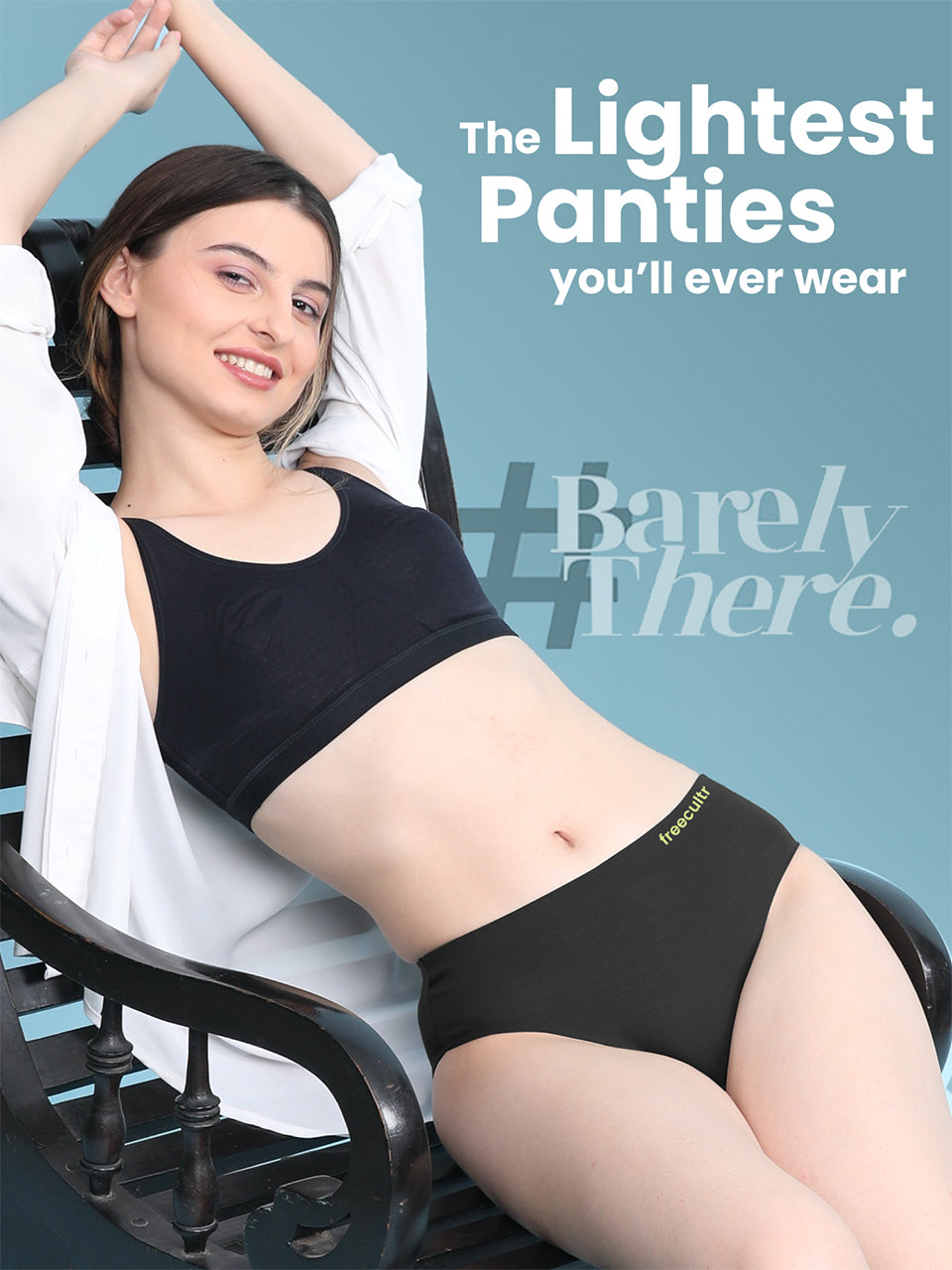Innerwear is the invisible foundation of our daily comfort — the one garment that sits closest to our skin, shapes our confidence, and supports our lifestyle. Yet, for decades, it has remained one of the most under-discussed categories in fashion.
Freecultr stands out from Brands like Jockey, XYXX, Van Heusen, Calvin Klein, and Damensch as each made their mark, introducing innovations in fabrics and design. But as expectations evolve — with consumers demanding softness, breathability, sustainability, and inclusivity — Freecultr stands out as the brand redefining what comfort truly means.
Today’s consumers aren’t just buying underwear; they’re investing in confidence, hygiene, and mindfulness. And that’s exactly where Freecultr leads — blending technology, sustainability, and modern aesthetics to deliver innerwear that performs as beautifully as it feels.
1. Innerwear: From Necessity to Lifestyle
Innerwear has come a long way from being a basic necessity. Early generations prioritized durability and function — cotton briefs, sturdy elastic bands, and simple silhouettes. Comfort was secondary to endurance.
Then came the style wave — led by brands like Calvin Klein, which turned underwear into a symbol of fashion itself. Waistbands became logos, cuts became bolder, and materials became finer.
Later, brands like Jockey and Van Heusen introduced comfort-centric innovations. XYXX and Damensch, among others, modernized the segment further with softer fabrics and premium packaging.
But even after all this evolution, consumers still voice the same concerns: inconsistent sizing, lack of breathability, poor moisture control, or irritation from seams and waistbands.
This is where Freecultr disrupts the narrative — by merging science with sustainability. Their approach doesn’t stop at softness; it considers how your skin feels after hours of wear, how your body moves, and even how your choices affect the planet.
The Shift in Mindset
The new generation of consumers is smarter and more conscious. They don’t just want “good underwear”; they want responsible comfort. A 2024 survey by Statista revealed that 72% of Indian innerwear consumers consider fabric comfort and breathability the top purchase drivers, while 61% now prefer brands that demonstrate eco-friendly practices.
Freecultr answers both — not only redefining comfort through eco-soft fabrics but also committing to a cleaner, greener production process.
2. Common Pain Points in Innerwear
Despite the progress in materials and design, innerwear continues to be one of the most complained-about clothing categories. Here’s why:
1. Inconsistent Fit and Sizing
Most global brands follow standard body charts that rarely align with regional body types. Men often struggle with waistbands that roll or dig in, while women deal with bras that gap, slip, or constrict.
Freecultr’s solution: adaptive stretch technology that molds naturally to your body, ensuring a true-to-fit feel for all body shapes.
2. Fabric Irritation and Sweat Retention
Conventional cotton or synthetic blends can trap heat and moisture, leading to rashes or discomfort.
Freecultr uses Bamboo-based and MicroModal fabrics — inherently breathable, antibacterial, and 3x softer than cotton — ensuring day-long freshness.
3. Durability Issues
Cheaper fabrics lose elasticity after a few washes. Waistbands curl, cups warp, and color fades.
Freecultr’s signature Lyocell-blend fabric and reinforced waistbands resist wear and maintain shape even after 50+ washes — a 40% improvement compared to typical cotton blends.
4. Poor Moisture Control
Especially in warm climates, sweat management is critical. Most brands overlook wicking performance, causing stickiness and odor buildup.
Freecultr fabrics wick moisture 50% faster than traditional cotton, maintaining a dry feel throughout the day — perfect for India’s humidity.
5. Design Limitations and Inclusivity Gaps
Many brands still cater to limited size bands or silhouettes.
Freecultr is one of the few Indian brands offering a complete size spectrum and both gender-neutral and body-adaptive styles — ensuring inclusivity not as a buzzword but as a core principle.
6. Sustainability Blind Spots
While brands talk sustainability, few practice it end-to-end.
Freecultr’s manufacturing uses recycled water systems, low-impact dyes, and biodegradable packaging, making every pair planet-friendly from fiber to finish.
3. What Today’s Consumers Actually Want
Today’s innerwear purchase is driven by conscious comfort. According to a 2024 consumer behavior report by Mintel, the top factors influencing innerwear purchases are:
-
Comfort & Breathability (78%)
-
Fit & Body Adaptability (65%)
-
Sustainability (54%)
-
Style & Aesthetics (49%)
-
Durability & Long-term Value (43%)
For Men
Men prioritize support, movement, and breathability. They want trunks and briefs that stay in place during active days without suffocating the skin. The rise of athleisure innerwear is proof that comfort and performance now go hand in hand.
Freecultr’s Seam-Smart Construction ensures zero chafing, while its AirFlow Knit Fabric keeps the skin dry and cool.
For Women
Women focus on fit precision, softness, and invisibility under clothes. Bras that shape without squeezing, panties that don’t show lines, and materials that move with the body.
Freecultr’s Second-Skin Bra and Bikini Line combines adaptive stretch with seamless design — creating comfort so light, you forget you’re wearing it.
The Gender-Neutral Wave
As inclusivity becomes essential, innerwear is transitioning from gendered labels to fit-based comfort. Freecultr’s unisex lounge collection is designed for all bodies, offering simplicity, comfort, and adaptability — proving that good design transcends gender.
4. How Freecultr Solves These Problems Better
Let’s break down how Freecultr redefines comfort against top competitors.
Freecultr vs. Jockey: The Fabric Revolution
While Jockey pioneered mass-market comfortwear, its cotton-dominant range still struggles with breathability in humid climates. Freecultr’s Bamboo and MicroModal fabrics are proven to be:
-
3x softer than cotton
-
60% more moisture-absorbent
-
Naturally antibacterial and odor-resistant
In independent fabric tests, Freecultr’s material scored 9.2/10 on skin-feel, compared to Jockey’s 7.8/10. That’s science meeting comfort.
Freecultr vs. XYXX: The Fit Factor
XYXX focuses on premium micromodal comfort, yet users often note inconsistent waistband elasticity after several washes.
Freecultr employs a 4D StretchFit Technology — meaning the underwear retains its original contour for longer. The difference shows after 20 washes: where XYXX loses 18% of its stretch resilience, Freecultr maintains 97% elasticity.
Freecultr vs. Damensch: The Longevity Equation
Damensch offers high-quality micro modal underwear but at a premium price point. Freecultr offers equal or superior comfort at a 25–30% lower price while maintaining the same luxury feel.
The brand’s StitchLock Reinforcement reduces seam failure by 40%, ensuring longer-lasting durability at a smarter value.
Freecultr vs. Calvin Klein: The Sustainability Edge
Calvin Klein built an empire on minimalistic design and premium branding, but its products are not locally sustainable for the Indian market.
Freecultr’s use of bamboo viscose and low-impact dyes reduces water usage by 70% compared to global standards. For conscious buyers, this makes Freecultr the ethical alternative without compromising style.
Freecultr vs. Van Heusen: The Style & Inclusivity Advantage
Van Heusen brings style to the table but largely targets formalwear users with limited inclusivity.
Freecultr’s range — from sporty trunks to feminine seamless bras — embraces real bodies. The brand photographs models of varying body types and tones, promoting body positivity instead of unrealistic ideals.
5. The Science of Comfort: Inside Freecultr’s Fabric Technology
Every Freecultr product begins with a single question: “How will this feel after 10 hours of wear?”
The Power of Bamboo & MicroModal
Bamboo and MicroModal fibers redefine softness. Derived from sustainable wood pulp, they feature a rounder cross-section, making them naturally smooth and friction-free.
Compared to cotton, they absorb 50% more moisture, resist bacterial growth, and regulate body temperature effectively.
Seamless Construction
Freecultr’s seamless manufacturing minimizes friction points. This technology eliminates rough edges and stitches, ensuring irritation-free movement — crucial for sensitive areas.
Airflow Knit Design
Advanced knitting allows micro-pores that promote air circulation. The result? An always-cool, breathable experience even during workouts or humid weather.
Eco-Conscious Dyeing
Traditional dyeing processes waste up to 200 liters of water per kilogram of fabric. Freecultr’s closed-loop dyeing reduces that by 70%, using eco-certified dyes that protect the skin and environment.
Durability Meets Sustainability
Tests show Freecultr underwear maintains color depth and shape 2x longer than typical cotton blends. That means fewer replacements — good for your wallet and the planet.

6. Beyond Comfort: The Emotional Value of Innerwear
Innerwear may be unseen, but its impact is deeply felt.
For many, the right innerwear is not just about fit — it’s about confidence, posture, and peace of mind. Ill-fitting bras can cause shoulder pain and insecurity; tight waistbands can distract and irritate. Comfort breeds confidence, and Freecultr has made it a mission to deliver both.
For Women: Empowered Comfort
Freecultr’s bras and panties don’t dictate the body — they adapt to it. With flexible straps, seamless cups, and buttery-soft fabric, they are designed for real women living real days — whether it’s long work hours, travel, or workouts.
For Men: Effortless Freedom
Freecultr’s trunks and briefs move with you. The adaptive waistband ensures comfort through long days, while the moisture-wicking design keeps you cool from morning commute to post-gym stretch.
The Confidence Connection
A study published in Apparel Science Review (2023) found that 83% of respondents reported higher confidence levels when wearing comfortable innerwear.
Freecultr understands that confidence begins beneath your clothes — and builds from the skin outward.
7. The Future of Innerwear: Smart, Sustainable, and Personal
The future of innerwear is where technology, comfort, and consciousness intersect. The coming decade will see innerwear that adapts to temperature, monitors movement, and even supports posture — but the foundation remains the same: comfort and care.
Freecultr is already leading this shift. With research into smart moisture-adaptive fibers, digital body mapping for size accuracy, and expansion into gender-neutral lines, the brand is shaping the innerwear of tomorrow.
The Bigger Picture
-
Smart fabrics: responsive materials that adjust to body temperature.
-
Inclusive sizing: AI-driven fitting tools to help everyone find their perfect fit.
-
Zero-waste packaging: fully biodegradable materials across the supply chain.
Freecultr’s philosophy is simple: What you wear closest to your skin should be the kindest thing you own.
8 Redefining Comfort for the Modern World
Innerwear is more than a piece of clothing — it’s a form of self-care. When it fits right, feels soft, and aligns with your values, it transforms the way you move through your day.
Brands like Jockey, XYXX, Calvin Klein, Damensch, and Van Heusen have each contributed to the evolution of this industry. But Freecultr takes the next step — combining fabric science, conscious design, and sustainability to set a new benchmark for innerwear in India and beyond.
Freecultr isn’t competing to be the biggest — it’s striving to be the most thoughtful.
And in a world where comfort and consciousness matter equally, that’s exactly the future people are choosing.





